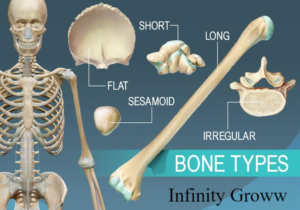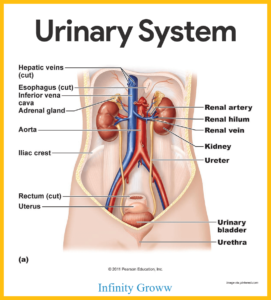Table of Contents:
- Introduction
- Understanding the Endocrine System
- What is the Endocrine System?
- Endocrine vs. Nervous System
- Hormones: Messengers of the Endocrine System
- Components of the Endocrine System
- Pituitary Gland
- Thyroid Gland
- Parathyroid Glands
- Adrenal Glands
- Pancreas
- Pineal Gland
- Ovaries and Testes
- Functions of the Endocrine System
- Regulation of Growth and Development
- Metabolism and Energy Balance
- Reproduction and Sexual Development
- Stress Response
- Mood and Emotions
- Common Endocrine Disorders
- Diabetes Mellitus
- Hypothyroidism and Hyperthyroidism
- Addison’s Disease and Cushing’s Syndrome
- Polycystic Ovary Syndrome (PCOS)
- Infections and the Endocrine System
- Infection Risk Factors and the Endocrine System
- Impact of Infections on Hormone Regulation
- Endocrine System Infections: Examples and Implications
- Protecting and Maintaining Endocrine Health
- Healthy Lifestyle Practices
- Regular Medical Check-ups
- Recognizing and Addressing Symptoms
- Conclusion
Introduction :
The human body is a marvel of intricate systems working in harmony, and one of the most vital regulatory systems is the endocrine system. Comprising a network of glands and hormones, the endocrine system plays a pivotal role in maintaining bodily functions, growth, and overall well-being. In this comprehensive guide, we delve into the capabilities, components, and functions of the endocrine system, as well as explore its vulnerability to infections and how to safeguard its health.

Understanding the Endocrine System :
The human body operates like a symphony, with various systems working together to maintain harmony and balance. Among these intricate systems, the endocrine system stands as a conductor, orchestrating the regulation of numerous bodily functions. This section delves into the fundamental aspects of the endocrine system, explaining what it is, how it differs from the nervous system, and the role of hormones as messengers in this remarkable system.
What is the Endocrine System?
The endocrine system is a complex network of glands and organs that produce and secrete hormones into the bloodstream. These hormones act as chemical messengers, traveling throughout the body to target cells and tissues, where they elicit specific responses. Unlike the nervous system, which uses electrical signals for rapid communication, the endocrine system’s effects are more gradual and widespread.
Endocrine vs. Nervous System:
While both the endocrine and nervous systems play crucial roles in communication and regulation within the body, they do so in distinct ways.
Endocrine System:
- Communication: Relies on hormones carried by the bloodstream.
- Speed: Responses are slower but more prolonged.
- Range: Acts on target cells throughout the body.
- Duration: Effects can last longer, even after hormone levels decrease.
- Examples: Thyroid hormones, insulin, estrogen, testosterone.
Nervous System:
- Communication: Utilizes electrical signals (nerve impulses) transmitted through neurons.
- Speed: Responses are rapid, almost instantaneous.
- Range: Primarily influences specific target cells or nearby neurons.
- Duration: Effects are brief and cease when the signal stops.
- Examples: Sending a muscle contraction signal, pain perception.
Hormones: Messengers of the Endocrine System:
Hormones are the backbone of the endocrine system, acting as messengers that regulate a myriad of bodily functions. They are produced by various glands and are finely tuned to maintain equilibrium. Here are some key points about hormones:
- Types of Hormones: Hormones fall into several categories, including steroids, peptides, and amines. Each type has distinct functions and mechanisms of action.
- Secretion Control: Hormone secretion is tightly regulated to respond to changing conditions. Feedback loops involving the hypothalamus, pituitary gland, and target organs ensure hormone levels remain within optimal ranges.
- Target Specificity: Hormones affect only specific cells or tissues equipped with the appropriate receptors. This specificity ensures that messages are directed only to the intended recipients.
- Roles of Hormones: Hormones influence an array of functions, including growth and development, metabolism, reproduction, stress response, mood regulation, and more.
- Endocrine Disorders: Imbalances in hormone production, secretion, or receptor sensitivity can lead to various disorders, ranging from diabetes and thyroid disorders to reproductive issues and growth abnormalities.
In essence, the endocrine system’s significance lies in its ability to maintain homeostasis and facilitate communication among different parts of the body, contributing to overall health and well-being. Hormones, as messengers, ensure that cells receive the signals they need to perform their specialized functions. Understanding the intricate interplay between hormones and their target cells is key to appreciating the complexity and brilliance of the endocrine system’s role in human physiology.
Components of the Endocrine System :

The endocrine system is a harmonious ensemble of glands and organs, each playing a distinct role in regulating bodily functions through the secretion of hormones. This section illuminates the key components of the endocrine system, highlighting the functions and significance of each gland in maintaining homeostasis and orchestrating various physiological processes.
Pituitary Gland:
The pituitary gland, often referred to as the “master gland,” wields a remarkable influence over other endocrine glands. Nestled at the base of the brain, the pituitary gland is divided into two sections: the anterior and posterior pituitary.
- Anterior Pituitary: This segment synthesizes and releases hormones that control other endocrine glands. Notable hormones produced include growth hormone, thyroid-stimulating hormone, adrenocorticotropic hormone, follicle-stimulating hormone, luteinizing hormone, and prolactin.
- Posterior Pituitary: Though it doesn’t synthesize hormones, the posterior pituitary stores and releases oxytocin and vasopressin (antidiuretic hormone), which regulate water balance, blood pressure, and uterine contractions during childbirth.
Thyroid Gland:
Located in the neck, the thyroid gland is pivotal in regulating metabolism and energy balance. It produces thyroid hormones, chiefly thyroxine (T4) and triiodothyronine (T3), which influence cellular processes and metabolic rate.

- Thyroid Hormones: T3 and T4 influence growth, development, and energy expenditure. Their production is regulated by thyroid-stimulating hormone from the pituitary gland.
- Parathyroid Glands: Tiny and inconspicuous, the parathyroid glands are four small structures embedded within the thyroid gland. They regulate calcium levels in the blood through the secretion of parathyroid hormone (PTH).
- Parathyroid Hormone (PTH): PTH increases calcium levels in the blood by stimulating the release of calcium from bones and promoting its absorption in the intestines and kidneys.
Adrenal Glands:
The adrenal glands, perched atop the kidneys, have a dual composition with distinct functions in different layers.
- Adrenal Cortex: This outer layer produces corticosteroids, including cortisol (stress response) and aldosterone (regulation of sodium and potassium levels).
- Adrenal Medulla: This inner layer secretes catecholamines, such as adrenaline (epinephrine) and noradrenaline (norepinephrine), which prompt the body’s fight-or-flight response.
Pancreas:
The pancreas wears a dual hat, functioning as both an endocrine and exocrine gland. Its endocrine role involves the secretion of hormones regulating blood sugar levels.
- Insulin: Produced by beta cells, insulin facilitates the uptake of glucose by cells, thereby lowering blood sugar levels.
- Glucagon: Released by alpha cells, glucagon raises blood sugar levels by promoting the release of stored glucose from the liver.
Pineal Gland:
Residing deep within the brain, the pineal gland synthesizes melatonin, a hormone that governs sleep-wake cycles and circadian rhythms.
- Melatonin: This hormone is released in response to darkness and helps regulate sleep patterns, contributing to the body’s internal clock.
Ovaries and Testes:
The ovaries in females and testes in males are responsible for producing sex hormones, which influence reproductive development and secondary sexual characteristics.
- Ovaries: Estrogen and progesterone regulate the menstrual cycle, promote fertility, and maintain pregnancy.
- Testes: Testosterone is key to male reproductive development, including sperm production and the development of masculine traits.
Each of these components, with its unique functions and hormone production, contributes to the symphony of the endocrine system, ensuring that vital processes are coordinated, balanced, and responsive to the body’s needs.
Functions of the Endocrine System :
The endocrine system orchestrates a multitude of vital functions that shape human growth, metabolism, reproduction, and emotional responses. Here’s a breakdown of how this intricate system operates in various aspects of our lives:
1. Regulation of Growth and Development:
- Role of Growth Hormone: Secreted by the pituitary gland, growth hormone plays a central role in promoting tissue growth and development during childhood and adolescence.
- Thyroid Hormones and Growth: Thyroid hormones influence overall growth, including bone development and brain maturation.
- Puberty and Sex Hormones: Hormones like estrogen and testosterone contribute to the growth spurt and development of secondary sexual characteristics during puberty.
2. Metabolism and Energy Balance:
- Thyroid Hormones and Metabolism: Thyroxine (T4) and triiodothyronine (T3) regulate metabolic rate, influencing how efficiently the body utilizes energy.
- Insulin and Glucagon: The pancreas’s insulin and glucagon regulate blood sugar levels, ensuring a steady supply of energy to cells.
- Role of Adrenal Hormones: Cortisol from the adrenal glands helps regulate metabolism and manage stress responses.
3. Reproduction and Sexual Development:
- Sex Hormones and Reproduction: Estrogen and progesterone in females, as well as testosterone in males, regulate reproductive processes, including menstrual cycles, ovulation, and sperm production.
- Pituitary and Gonadotropins: Hormones like follicle-stimulating hormone (FSH) and luteinizing hormone (LH) from the pituitary gland play a pivotal role in regulating the ovaries and testes.
4. Stress Response:
- Adrenaline and Noradrenaline: These catecholamines from the adrenal medulla trigger the body’s fight-or-flight response during stressful situations.
- Cortisol and Stress Adaptation: Cortisol, often referred to as the “stress hormone,” helps the body respond to prolonged stress by increasing energy availability and suppressing non-essential functions.
5. Mood and Emotions:
- Serotonin and Mood: Although not a classic endocrine hormone, serotonin plays a crucial role in mood regulation and emotional well-being. Its production is influenced by various factors, including exposure to natural light.
- Hormonal Imbalances and Mood Disorders: Disruptions in hormone levels can contribute to mood disorders such as depression and anxiety.
In summary, the endocrine system is a multifaceted regulator, affecting diverse aspects of human life. From growth and metabolism to reproduction, stress responses, and emotional well-being, its influence is pervasive and intricate. Understanding how hormones interact and function within the body is key to appreciating the complexity of the endocrine system’s role in maintaining overall health and balance.
Common Endocrine Disorders :
The endocrine system’s delicate balance can be disrupted by various factors, leading to a range of disorders that affect health and well-being. This section delves into some of the most prevalent endocrine disorders, shedding light on their causes, symptoms, and impacts.

1. Diabetes Mellitus:
- Type 1 Diabetes: An autoimmune disorder where the immune system attacks insulin-producing beta cells in the pancreas. Requires lifelong insulin therapy.
- Type 2 Diabetes: Often linked to lifestyle factors, such as obesity and physical inactivity. Cells become resistant to insulin’s effects, leading to elevated blood sugar levels.
- Gestational Diabetes: Develops during pregnancy and usually resolves after childbirth.
- Symptoms: Increased thirst, frequent urination, unexplained weight loss, fatigue, blurry vision.
- Complications: Nerve damage, kidney disease, cardiovascular issues, foot problems, eye damage.
2. Hypothyroidism and Hyperthyroidism:
- Hypothyroidism: An underactive thyroid gland fails to produce enough thyroid hormones. Slows down metabolism and causes symptoms like fatigue, weight gain, cold intolerance, and depression.
- Hyperthyroidism: An overactive thyroid gland produces excessive thyroid hormones. Results in symptoms like weight loss, rapid heartbeat, anxiety, and heat intolerance.
- Causes: Autoimmune disorders (Hashimoto’s for hypothyroidism, Graves’ for hyperthyroidism), iodine deficiency, medications.
- Treatment: Synthetic thyroid hormones for hypothyroidism, medications to block excess hormone production or surgery for hyperthyroidism.
3. Addison’s Disease and Cushing’s Syndrome:
- Addison’s Disease: Occurs when the adrenal glands don’t produce enough cortisol and sometimes aldosterone. Symptoms include fatigue, weight loss, low blood pressure, and darkening of the skin.
- Cushing’s Syndrome: Caused by prolonged exposure to high levels of cortisol. Symptoms include weight gain, “moon face,” muscle weakness, and skin changes.
- Causes: Addison’s is often autoimmune; Cushing’s can result from adrenal tumors or excessive steroid medications.
- Treatment: Hormone replacement therapy for Addison’s, surgery or medication to address the cause of Cushing’s.
4. Polycystic Ovary Syndrome (PCOS):
- PCOS: A common hormonal disorder among women of reproductive age. Involves an imbalance of sex hormones, leading to irregular periods, cysts on the ovaries, and hormonal imbalances.
- Symptoms: Irregular periods, excessive hair growth, acne, weight gain, fertility issues.
- Causes: Genetics, insulin resistance, and hormonal factors.
- Treatment: Lifestyle changes, birth control pills, hormone therapy, and fertility treatments.
These common endocrine disorders highlight the intricate interplay of hormones and their impact on various bodily functions. Timely diagnosis, appropriate management, and lifestyle modifications play a crucial role in mitigating the effects of these disorders and improving quality of life.
Infections and the Endocrine System :
In the delicate interplay of bodily systems, infections can pose significant challenges to the finely tuned balance of the endocrine system. This section explores the connection between infections and the endocrine system, examining how infections can disrupt hormone regulation and impact overall health.
1. Infection Risk Factors and the Endocrine System:
- Immune System Interplay: The immune system and endocrine system are intricately linked. Infections can trigger immune responses that affect hormone production and regulation.
- Stress and Susceptibility: Chronic stress caused by infections can disrupt the endocrine system’s stress response, leading to imbalances in cortisol and other hormones.
- Impact on Glands: Infections can directly affect endocrine glands, causing inflammation and dysfunction.
2. Impact of Infections on Hormone Regulation:
- Disruption of Feedback Loops: Infections can interfere with the feedback loops that regulate hormone production. For example, inflammation from infections can impact the hypothalamus-pituitary axis.
- Cytokine Storms: Severe infections can trigger an excessive release of cytokines, leading to a “cytokine storm” that disrupts normal endocrine function.
- Immunomodulation: Some infections can manipulate the immune response, influencing hormone levels. For instance, certain viruses can affect the production of thyroid hormones.
3. Endocrine System Infections: Examples and Implications:
- Thyroiditis: Inflammation of the thyroid gland, often caused by viral infections. Can lead to hyperthyroidism (initially) or hypothyroidism.
- Pancreatitis: Infections like mumps or cytomegalovirus can lead to pancreatitis, affecting insulin production and blood sugar regulation.
- Adrenalitis: Infections targeting the adrenal glands can disrupt cortisol production, impacting the body’s stress response.
- Impact on Reproductive Health: Infections can affect sex hormone production, leading to menstrual irregularities or infertility.
- Cytomegalovirus (CMV) and Congenital Issues: CMV infection during pregnancy can impact fetal endocrine development and lead to developmental issues.
4. Protecting and Maintaining Endocrine Health:
- Hygiene and Prevention: Practicing good hygiene and taking measures to prevent infections can reduce the risk of endocrine-related complications.
- Vaccinations: Some vaccinations can protect against infections that could impact the endocrine system.
- Timely Medical Attention: Addressing infections promptly can help mitigate their effects on hormone regulation.
- Monitoring and Management: Individuals with endocrine disorders should be especially vigilant about infections and work closely with healthcare providers to manage their condition during infections.
Infections serve as a reminder of the intricate interconnectedness of bodily systems. While infections can challenge the endocrine system’s equilibrium, awareness, prevention, and timely intervention can help safeguard endocrine health and maintain overall well-being.
Protecting and Maintaining Endocrine Health :
The endocrine system plays a vital role in maintaining overall health, and it’s essential to take proactive steps to protect and support its proper function. This section delves into practical ways to ensure the health of your endocrine system through healthy lifestyle practices, regular medical check-ups, and recognizing and addressing symptoms.
1. Healthy Lifestyle Practices:
- Balanced Diet: Consume a diet rich in whole grains, lean proteins, healthy fats, and a variety of fruits and vegetables. Limit sugar and processed foods.
- Regular Exercise: Engage in regular physical activity to support metabolism, weight management, and overall hormonal balance.
- Adequate Sleep: Prioritize quality sleep to support the endocrine system’s regulation of circadian rhythms and hormone production.
- Stress Management: Practice stress-reduction techniques such as meditation, deep breathing, yoga, and mindfulness to minimize the impact of chronic stress on hormones.
- Hydration: Drink enough water to support optimal metabolic processes and hormone transport.
2. Regular Medical Check-ups:
- Annual Physical Exams: Schedule regular check-ups with your healthcare provider to monitor your overall health and detect any potential endocrine-related issues.
- Hormone Testing: Discuss with your doctor the possibility of hormone level testing, especially if you have a family history of endocrine disorders or experience symptoms.
- Blood Sugar Monitoring: If you’re at risk of diabetes or have diabetes, monitor your blood sugar levels as advised by your healthcare provider.
3. Recognizing and Addressing Symptoms:
- Know Your Body: Educate yourself about the signs and symptoms of common endocrine disorders, such as diabetes, thyroid issues, and adrenal dysfunction.
- Listen to Your Body: Pay attention to changes in energy levels, mood, sleep patterns, weight, and other bodily functions. Any persistent or unusual symptoms should be discussed with a healthcare provider.
- Open Communication: Maintain open communication with your healthcare provider. Be honest about your lifestyle, symptoms, and concerns so that they can provide appropriate guidance.
4. Avoid Self-Diagnosis and Self-Treatment:
- While it’s important to be informed, avoid self-diagnosing or self-treating potential endocrine issues based solely on internet research. Consulting a qualified healthcare professional is essential for accurate diagnosis and treatment.
5. Stay Informed:
- Keep up with advancements in endocrinology and hormonal health through reputable sources and medical literature. Staying informed empowers you to make informed decisions about your health.
Remember, the endocrine system’s health is intricately tied to your overall well-being. By adopting healthy lifestyle practices, prioritizing regular medical check-ups, and promptly addressing any symptoms or concerns, you can contribute to the optimal function of your endocrine system and enhance your overall quality of life.
Conclusion :
In the intricate tapestry of human biology, the endocrine system stands as a remarkable conductor, orchestrating the harmony of hormones that govern vital functions. From the masterful coordination of growth and metabolism to the nuanced regulation of reproduction, stress responses, and emotions, the endocrine system’s capabilities are awe-inspiring. Its components – the pituitary gland, thyroid, adrenal glands, and more – each play an integral role, akin to instrumentalists in an ensemble. However, this delicate symphony is not impervious to disruptions. Infections can cast dissonance, disrupting hormone regulation and impacting health. Yet, through awareness, prevention, and attentive medical care, the endocrine system’s resiliency can be upheld. As we marvel at the complexities of this invisible conductor, let us cherish its role in maintaining the rhythm of life and commit to its well-being for a harmonious existence.







